
Researchers have developed a groundbreaking “mini gene” that holds promise as a gene therapy for Usher Syndrome type 1F. The new therapy has been tested on mice and has been shown to increase the production of a crucial protein that is responsible for the deafness and progressive vision loss associated with Usher 1F. This research marks a significant step towards the development of a treatment for Usher 1F blindness, which currently has no cure.
Researchers have developed a “mini gene” therapy for a debilitating syndrome that results in both blindness and deafness.
Usher Syndrome type 1F is a rare, debilitating genetic disorder characterized by deafness, impaired balance, and the gradual deterioration of vision.
Now, a team of researchers from Harvard Medical School, Massachusetts Eye and Ear, and The Ohio State University have taken a crucial first step towards creating a gene therapy for Usher Syndrome type 1F.
Their research, conducted in mice, was recently published in the journal Nature Communications.
The scientists designed a “mini gene” — a shortened version of a gene — to replace the gene that is mutated in Usher 1F. The mutation renders hair cells inside the inner ear incapable of producing a key protein involved in sound transmission. In mice, the mini gene increased the production of the missing protein, enabling the hair cells to sense sound and restoring hearing.
Because vision loss in Usher 1F involves a slightly different form of the same protein, the researchers say the same approach may be useful for preventing blindness.
“Patients with Usher 1F are born with profound hearing loss and progressive vision loss, and so far we have been able to offer very few solutions to these families,” said co-senior author Artur Indzhykulian, HMS assistant professor of otolaryngology–head and neck surgery at Mass Eye and Ear.
The researchers plan to continue testing the mini gene in other animal models and, eventually, hope to test it in humans.
“It’s completely devastating to be born deaf and then lose your vision, so we hope that this mini gene can eventually be turned into a treatment for this disease,” said co-senior author David Corey, the Bertarelli Professor of Translational Medical Science in the Blavatnik Institute at HMS.
Applying expertise to a new problem
Children with Usher Syndrome are typically born completely deaf or with severely impaired hearing, lack balance, and lose vision over time as the retina deteriorates. Blindness commonly occurs by adulthood.
These problems arise due to a mutation that interferes with the production of a protein called protocadherin-15, which has slightly different forms in the ear and eye and is needed for cells in the auditory and visual systems to function properly.
Researchers in the Corey lab have long been interested in protocadherin-15’s role in the inner ear. Specifically, they wanted to know how the protein helps sensory receptors called hair cells in the ear convert vibrations from the environment into electrical signals, which the brain interprets as sound.
Corey’s team previously figured out how protocadherin-15 partners with another protein, cadherin 23, in hair cells to create filaments that physically pull open ion channels as the bundles vibrate, allowing electrical current to enter the cells. In the absence of this protein, electrical current can’t enter hair cells, the conversion from vibration to electricity doesn’t occur, and the brain cannot detect sound.
Through this work, Corey became interested in designing a gene therapy for Usher 1F. The therapy would introduce DNA that codes for protocadherin-15 into a cell, enabling the cell to begin making the protein.
However, because protocadherin-15 is so big, its DNA is too large for the typical viral capsule used to transport genetic material into a cell.
So the researchers decided to explore another option: shortening the DNA to create a mini gene that still codes for functional protein yet is small enough to fit inside the viral capsule.
A gene becomes a mini gene
The first step involved painstakingly mapping all 25,000 atoms in the external structure of inner-ear protocadherin-15 — a process carried out by co-senior author Marcos Sotomayor, a former research fellow at HMS and now associate professor of chemistry and biochemistry at Ohio State.
Using a combination of X-ray crystallography and cryo-electron microscopy, Sotomayor found that the protein is composed of atoms arranged into what looks like 11 links in a chain.
Sotomayor made eight different versions of protocadherin-15, each with different links missing to make the protein smaller. The researchers then reverse-engineered the truncated protein structures into DNA blueprints that they could test as mini genes.
“The knowledge we gained by studying the structure of protocadherin-15 in excruciating detail allowed us to more quickly design shorter versions of the protein for gene therapy,” Sotomayor explained.
Indzhykulian tested the eight mini genes on inner-ear cells in a dish. He confirmed that truncated versions of protocadherin-15 made from mini-gene DNA did bind to cadherin 23, its protein partner in hair cells.
From there, the researchers selected the three mini genes that were small enough to fit inside the viral capsule.
Lead author Maryna Ivanchenko, instructor in neurobiology at HMS, extensively tested the three mini genes in the ears of mice that were genetically modified to stop producing protocadherin-15.
Ultimately, only one mini gene worked.
The gene successfully prompted hair cells to make a mini version of protocadherin-15, which bound to cadherin-23 and formed the filaments needed to open ion channels. The hair cells successfully converted vibrations into electrical signals.
Auditory testing of mice that received the mini gene showed their brains could receive the sound signal coming from their ears — the previously deaf animals could hear.
“We were all pleasantly surprised,” Corey said. “We thought it would take years of optimizing and trying things and tweaking the protein structure, but this one version pretty much worked.”
“The results were thrilling for us,” Ivanchenko added. “The most exciting aspect of our findings was that mice that had been completely deaf could now hear almost as well as normal mice.”
From the ear to the eye
While the mini gene successfully treated deafness in the mouse model of Usher 1F, the researchers are even more interested in its potential for treating blindness associated with the syndrome.
Since children with Usher 1F are born profoundly deaf and may lack hair cells in their inner ear, it’s unlikely that the mini gene could improve their hearing, the authors said. Additionally, many of these children are able to receive cochlear implants that allow them to hear.
Blindness is a different story, the researchers noted, because children with Usher 1F are born with normal vision. If the mini gene could produce the form of protocadherin-15 missing in the retina, it could halt vision loss, they said.
Why start by testing the mini gene in the mouse’s inner ear if treating vision loss is the main goal?
Mainly for logistical reasons, the researchers said. Lack of protocadherin-15 causes only mild vision loss in mice and progresses slowly. This means it would take years to test the mini genes in mouse models, and it would be hard to tell how well they worked. By contrast, the mice were born profoundly deaf, so the researchers got clear results within a couple of weeks.
“The whole project was designed to study the ear with the idea that something that works in the ear can later be applied to the eye, as an article of faith,” Corey said. “While the best test system is the mouse inner ear, the immediate goal is a treatment for blindness.”
The Corey lab is now testing the mini gene in zebrafish eyes — a better model because these fish experience more severe and rapid vision loss than mice when protocadherin-15 isn’t produced in the retina.
If the mini gene works in the zebrafish retina, the researchers will move to testing the approach in primates and, eventually, in humans.
Reference: “Mini-PCDH15 gene therapy rescues hearing in a mouse model of Usher syndrome type 1F” by Maryna V. Ivanchenko, Daniel M. Hathaway, Alex J. Klein, Bifeng Pan, Olga Strelkova, Pedro De-la-Torre, Xudong Wu, Cole W. Peters, Eric M. Mulhall, Kevin T. Booth, Corey Goldstein, Joseph Brower, Marcos Sotomayor, Artur A. Indzhykulian and David P. Corey, 26 April 2023, Nature Communications.
DOI: 10.1038/s41467-023-38038-y
Additional authors on the paper are Alex Klein, Bifeng Pan, Xudong Wu, Cole Peters, Eric Mulhall, Kevin Booth, and Corey Goldstein of HMS; Olga Strelkova, Pedro De-la-Torre, and Joseph Brower of Mass Eye and Ear; and Daniel Hathaway of HMS and Mass Eye and Ear.
The research was funded by the National Institutes of Health, the Usher 1F collaborative, the Bertarelli Foundation, the Quadrangle Fund for Advancing and Seeding Translational Research at HMS (Q-FASTR), and a Blavatnik Therapeutics Challenge Award at HMS.
Corey is a cofounder of Skylark Bio and Ivanchenko is a consultant for the company. Corey, Indzhykulian, Sotomayor, Ivanchenko, and Peters have filed a patent application on “AAV vectors encoding mini-PCDH15 and uses thereof”.


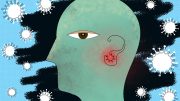
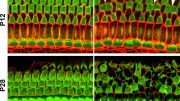

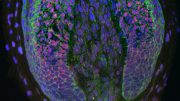
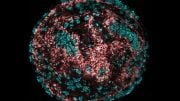
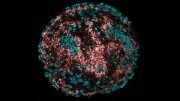

[[[ THERE IS A CORPSE ROTTING IN YOUR SKULL]]]